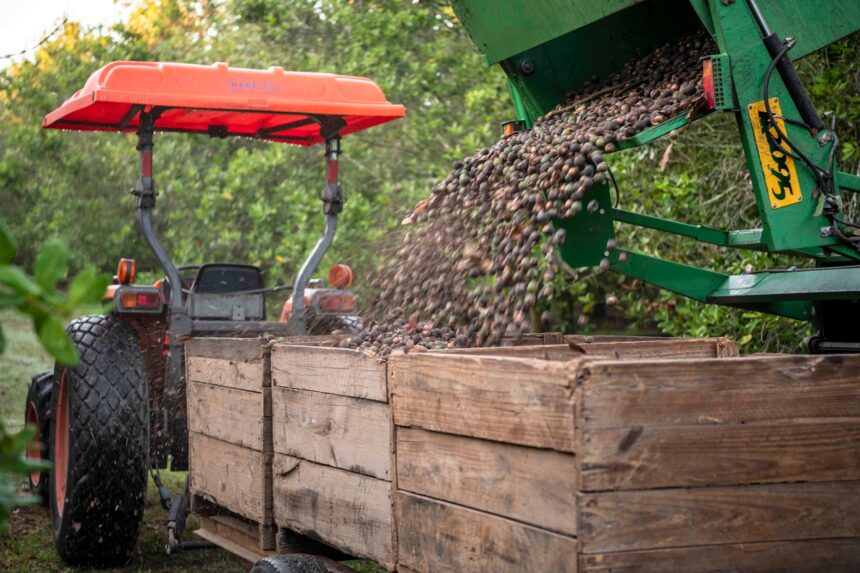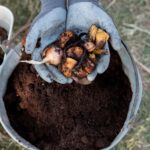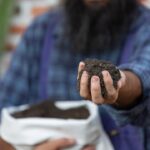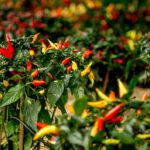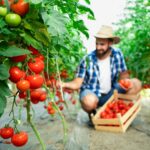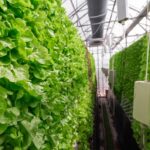Establishing a macadamia farm is a long-term investment that can yield high returns if done correctly. However, getting started requires careful planning and a significant initial outlay. From land preparation to planting, irrigation, and maintenance, understanding the full cost of setting up a macadamia farm helps farmers make informed decisions and avoid costly surprises. Here’s a detailed look at the key costs involved in establishing a macadamia farm and what to expect during the early years of operation.
The cost of land is one of the biggest variables in setting up a macadamia farm. If you already own suitable land with good drainage, deep soils, and a favorable climate, your upfront cost will be significantly lower. For those purchasing land, prices vary widely depending on the location, soil fertility, and proximity to infrastructure. In areas with ideal growing conditions, land may cost anywhere from $1,000 to $10,000 per acre or more.
Once the land is secured, the next major cost is land preparation. This includes clearing vegetation, plowing, leveling, digging planting holes, and in some cases, soil amendments such as lime or compost to correct pH and improve fertility. Land preparation can cost between $300 and $600 per acre depending on the scale of the work and the equipment used.
Macadamia seedlings are another crucial investment. High-quality grafted seedlings typically cost between $3 and $5 each. The recommended planting density is around 100 to 150 trees per acre, depending on variety and spacing. For one acre, farmers can expect to spend approximately $300 to $750 on seedlings alone. It’s advisable to purchase seedlings from certified nurseries to ensure disease-free, true-to-type trees.
Irrigation is essential, especially during the dry season and in the early years of tree establishment. A basic drip irrigation system may cost around $800 to $1,200 per acre, including installation and water tanks. Some farms also invest in solar-powered water pumps to reduce long-term operational costs.
Fertilization and pest management are ongoing requirements. Organic or chemical fertilizers are applied several times a year to promote healthy growth. Farmers should budget around $150 to $300 per acre annually for fertilizers, depending on soil tests and nutrient needs. In addition, pest and disease control may require $100 to $200 per acre per year, particularly in regions prone to borers, thrips, or fungal issues.
Labour is another major component, especially during planting, weeding, pruning, and harvesting in later years. In the first two to three years, labour costs can average $400 to $600 per acre per year. This includes planting, staking, mulching, and general care. As the trees mature and begin bearing fruit (typically after 3 to 4 years), labour costs will increase due to harvesting demands.
Other potential costs include fencing to protect young trees from animals, which can range from $500 to $1,000 per acre, depending on the materials used. Farm tools, protective clothing, and transport also add to the budget, particularly for new farmers setting up from scratch.
On average, the total cost of establishing a macadamia farm in the first year ranges between $2,500 and $5,000 per acre. This includes land preparation, seedlings, irrigation, labour, and other setup expenses. Maintenance in years two and three can cost $500 to $1,500 per acre annually, depending on inputs and care practices.
While the initial investment is high, macadamia farming becomes increasingly profitable after the fourth year, when the trees begin to produce commercially viable yields. A mature macadamia tree can produce 20 to 30 kilograms of nuts per season, with good returns per kilogram depending on market prices and nut quality.
Establishing a macadamia farm requires patience, commitment, and capital. However, with proper planning and consistent care, it can become a highly rewarding venture, offering sustainable income for decades. Farmers are encouraged to consult local agronomists, conduct soil tests, and start with pilot plots before scaling up to reduce risks and build experience.
Join 'Farmers Mag' WhatsApp Channel
Get the latest Farming news and tips delivered straight to your WhatsApp
CLICK HERE TO JOIN
